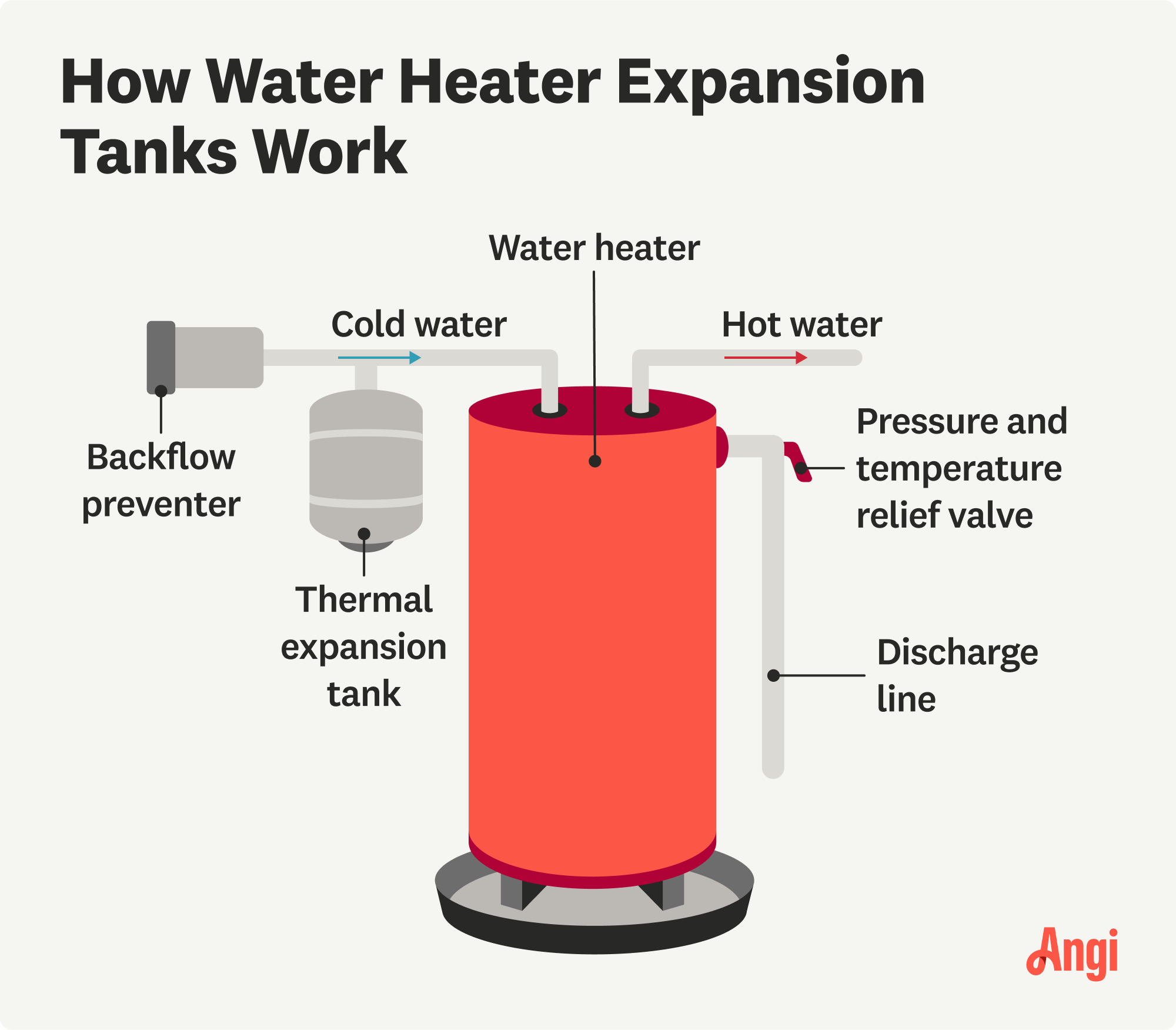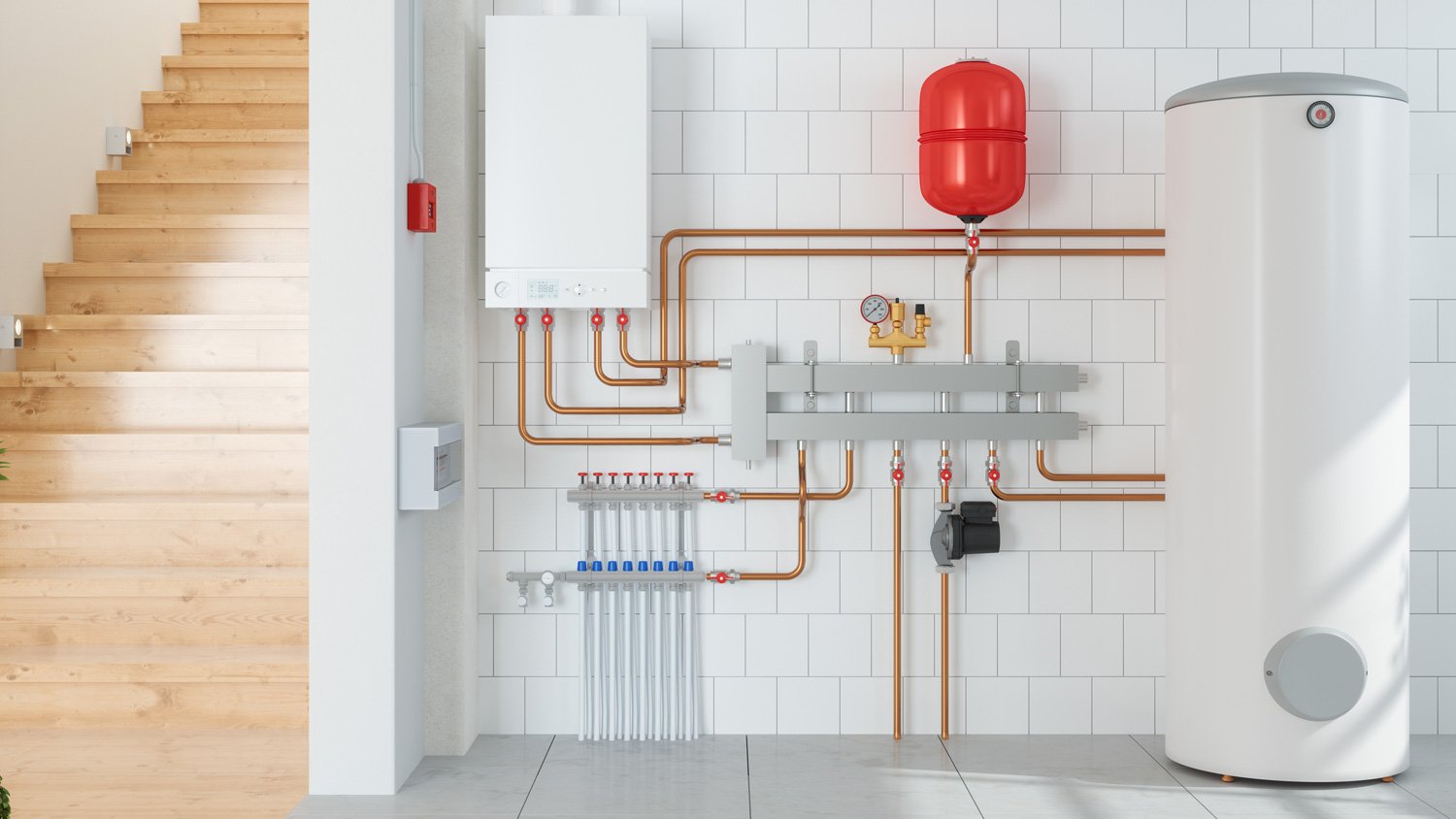Do I Need a Hot Water Heater Expansion Tank?
You might be under pressure without this addition to your water heater


Water heater expansion tanks cost around $350 to install.
Expansion tanks protect your water heater from rupturing.
Most municipalities require expansion tanks in residential homes.
Almost all homes have water heaters, but you may not know what a water heater expansion tank is. When water is heated in a tank, it expands and creates pressure on the water heater. An expansion tank relieves some of that pressure by taking water from the heater during the heating phase. You may wonder: Do I need a hot water heater expansion tank? In most residential properties, an expansion tank is now a requirement.

Legal Requirements
Home plumbing has changed quite a bit over time. Previously, many homes had an open system, meaning the plumbing could recycle water back to the city’s water supply. In such a case, overflow was unlikely. Now houses have closed systems.
Because the system can’t discharge into municipal pipes, pressure builds more quickly, requiring pressure relief systems. For this reason, expansion tanks are now required in almost all residential areas. A local water heater installation pro can help you determine which expansion tank you need.
Advantages of a Hot Water Heater Expansion Tank

There are several advantages to expansion tanks. A few of them are:
Not expensive to install or replace.
They last as long or longer than the water heater itself.
Adds a layer of security for your home, preventing future damage.
Have the possibility to lower insurance premiums if not previously installed.
Prevent leaks and ruptures of the water tank.
Keeping current with building codes.
How Much Do Water Heater Expansion Tanks Cost and What Size Do I Need?
Water heater expansion tanks cost between $150 and $450 with a national average of $325. The cost of installing an expansion tank depends on the size of the tank, its type, and your geographic location. The size of the expansion tank is determined by the heater size and the water pressure (psi). Corresponding sizes are:
| Heater Size (gal) | Water Pressure (psi) | Expansion Size (gal) |
|---|---|---|
| 40–60 | 40–50 | 2 |
| 40–60 | 60–80 | 3.2 |
| 80 | 40 | 2 |
| 80 | 50–60 | 3.2 |
| 80 | 80 | 4.4 |
Frequently Asked Questions
No, they are two different things. Some tanks have a pressure relief valve built in. The purpose of this valve is to prevent the rupturing of the water heater due to pressure generated during the heating process. An expansion tank redirects water from the heater tank to relieve pressure so while they have the same purpose—alleviating pressure—the expansion tank is the only item actually redirecting water.
Water expands when heated and also when freezing. When water is heated, it expands by around 4%. For a full water heater, this is one of the main reasons malfunctions occur—the hot water has nowhere else to go but out. Due to the constant expansion and reduction in volume, it’s recommended (required in most places) that an expansion tank be installed.
Water heater replacement costs around $1,300, but a total install will depend on a few factors. Solar heaters can cost upward of $3,700, while conventional gas heaters may cost less than $1,000. Tankless water heaters, common in apartments and homes without much space, cost around $2,600 to install. Expect the cost to increase significantly if new plumbing is required, or if there is damage from a previous water heater malfunctioning.
Electric water heaters use a high amount of electricity, so they’re best for homeowners who subsidize their electric bill with solar or who live in an area with inexpensive electricity. For others, gas water heaters versus electric water heaters may be the more cost-effective solution, with the added bonus of heating water quickly and efficiently. No matter which you choose, you can lower your water temperature as low as possible to keep costs down.















